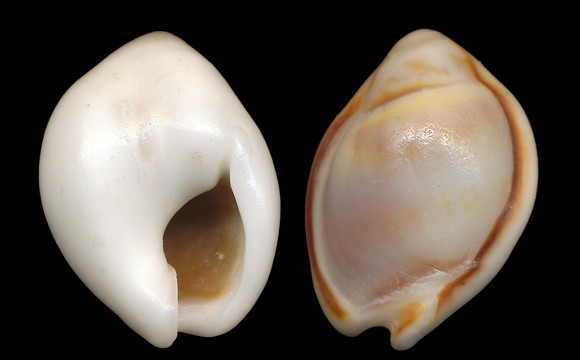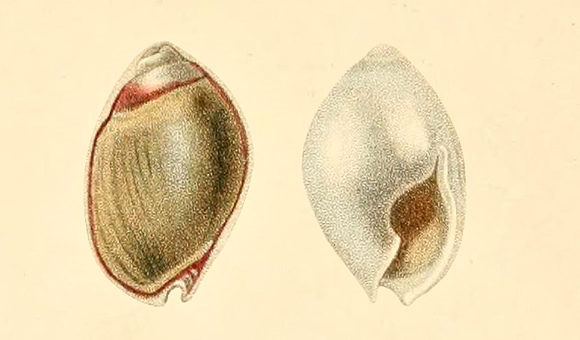
Eastern Mediterranean. Possibly also antilessepsian (Aqaba Gulf, Red Sea; cf. Gemert & Blatterer, 2013). Scavenger in the infralittoral, on sandy bottoms. For a long time, it has been suspected that Nassarius circumcinctus and Nassarius gibbosulus could be the same species. It appears that they could be sibling species (radular teeth slightly different), chiefly differing « in their developmental pathway, N. circumcinctus having a planktotrophic larval stage, and N. gibbosulus lacking this stage » (Oliveiro & Tringali, 1992).
Original taxon: Nassa circumcincta. « Testâ ovatâ, cinereâ, nitidâ, dorso gibbosâ; spirâ brevi, acutâ, uturâ fuscâ; labio cum callo crasso albo nitido tecto, marginibus usque ad spiram decurrentibus fusco marginatis; columellâ laevi, anticè uniplicatâ; labro calloso marginato, intus laevi. » – A. Adams: “Catalogue of the species of Nassa…”, Proceedings of the Zoological Society of London part XIX, London 1851-1852 (march 1851), p.102. – 2m deep, Haifa, NW. Israel. 14mm.
Original taxon: Nassa circumcincta. « Testâ ovatâ, cinereâ, nitidâ, dorso gibbosâ; spirâ brevi, acutâ, uturâ fuscâ; labio cum callo crasso albo nitido tecto, marginibus usque ad spiram decurrentibus fusco marginatis; columellâ laevi, anticè uniplicatâ; labro calloso marginato, intus laevi. » – A. Adams: “Catalogue of the species of Nassa…”, Proceedings of the Zoological Society of London part XIX, London 1851-1852 (march 1851), p.102. – 2m deep, Haifa, NW. Israel. 14mm.

Malacozoaires, Paris 1828, plate 7a.
« Shell oblong-ovate, ash-grey, shining, rather gibbous at the back; spire very short, obtuse; suture brown; columella excavated, with a very large, thick, white, brown-edged callosity, spread out as far as the apex; lip callous, smooth. Habitat: Red Sea. » – L. A. Reeve: Conchologia iconica v. VIII, London 1855, pl. XI.
But McAndrew, in the second page of his report on Testaceous Mollusca from the Gulf of Suez (1870): « Not only did I not obtain this species in the Gulf of Suez, but I did find it in the Mediterranean, on the coast of Syria, in company with N. gibbosula. » As long as a living specimen will not have been collected in the Red Sea, the presence of circumcinctus in this area will remain questionable.
But McAndrew, in the second page of his report on Testaceous Mollusca from the Gulf of Suez (1870): « Not only did I not obtain this species in the Gulf of Suez, but I did find it in the Mediterranean, on the coast of Syria, in company with N. gibbosula. » As long as a living specimen will not have been collected in the Red Sea, the presence of circumcinctus in this area will remain questionable.